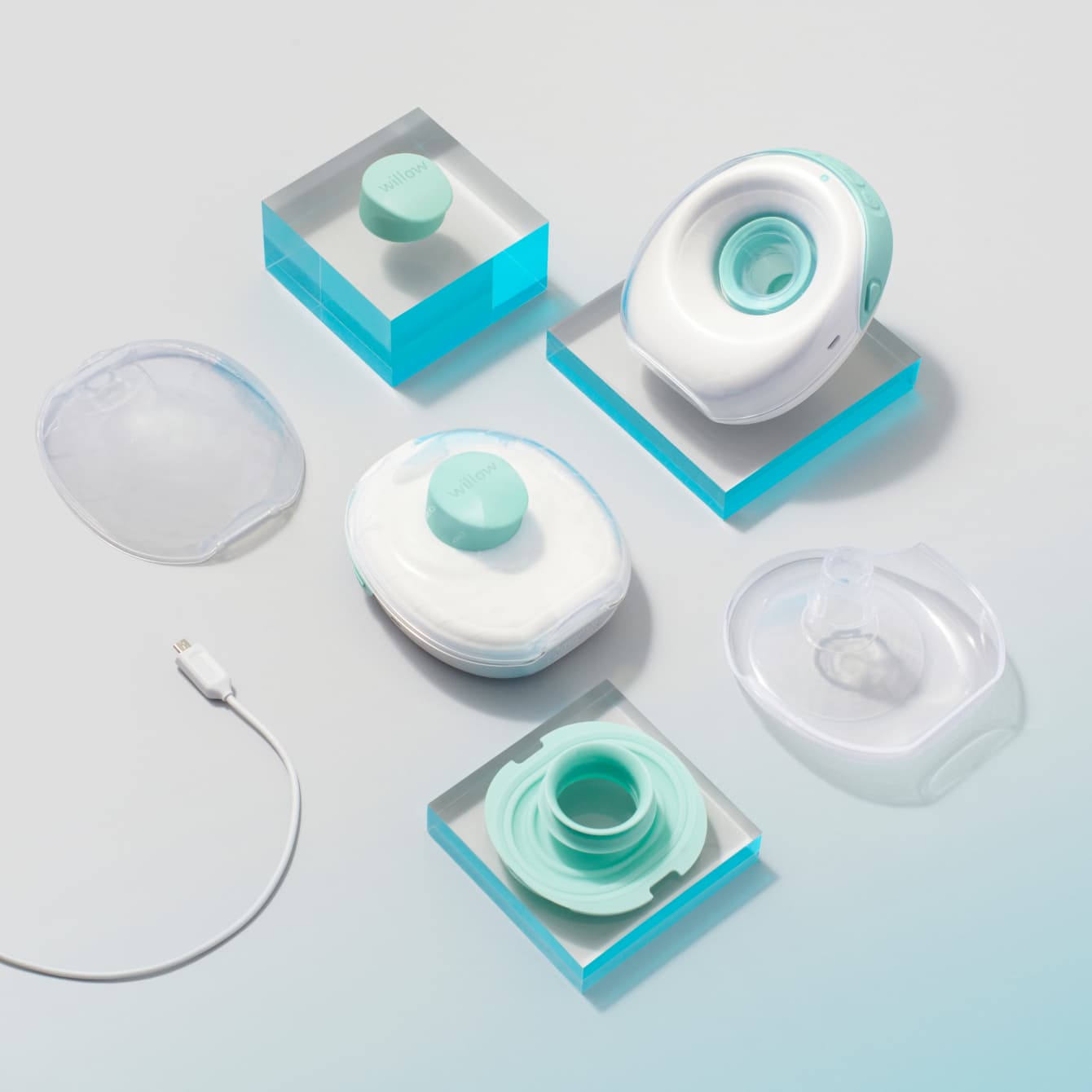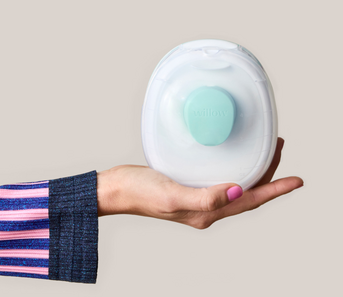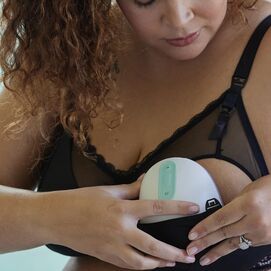“How does breastfeeding work, anyway?”
This is a question many new moms ask when it comes to deciding how they’ll choose to feed their little ones. The mama body is an incredible thing, with the ability to fully nourish your baby (or multiple babies).
Hopefully, by explaining some of the science-y stuff, we can help take some of the mystery out of breastfeeding, so you can see just how amazing an experience it can be.
What Is Breast Milk?
Breast milk is a liquid substance created by your body for the sole purpose of nourishing your baby. It’s made up of a combination of many things, including fat, protein, carbohydrates, enzymes, minerals and hormones.
Although all human milk contains a variety of nutrients and minerals, milk varies from person to person. The milk you develop will be perfectly suited to fit your baby’s needs. Cool, huh?
Breast Milk Changes
The composition of your milk will change depending on the time of day you breastfeed and your baby’s growth spurts. For example, your breast milk will contain higher levels of tryptophan, the amino acid that promotes sleep, at nighttime.
Your breast milk will also change as your baby grows. For example, the first type of milk is called colostrum, which is heavily concentrated milk for the first few days after birth. After a few days, your transitional milk will come in, which is a combination of colostrum and mature milk. Finally, your mature milk will come in after a couple of weeks.
How Is Breast Milk Made?
Your body begins to prepare for breastfeeding before you give birth. In fact, your body begins making breast milk even if you decide you want to bottle feed. That’s why you may notice your breasts enlarging and feeling sore. Your areolas will also darken due to changes in your hormones.
According to the USDA, breast milk is made inside the alveoli or grape-like clusters of cells within your breasts. Once the milk is made, it is then squeezed through the alveoli and into the milk ducts to prepare for expression. These ducts are responsible for carrying the milk to your nipple for your baby.
Established Lactation: Expression & Feeding Your Baby
The really cool part about the process of breastfeeding is the switch from hormonal production to autocrine production. When you’re pregnant, your body’s hormones are surging, resulting in the production of colostrum to prepare for breast milk.
This first stage is called Lactogenesis I (now that’s a wild word, isn’t it?). After the first stage, your body will move into Lactogenesis II, where your milk will increase in volume. This occurs a day or two after the birth of your baby.
After these first two hormone-controlled stages, your body will enter Lactogenesis III, where breast milk production becomes controlled at your breast, by your baby. At this point, you should have established lactation. This means your body will keep making milk as it’s being expressed in some way.
Production Volume
The amount of milk you produce will depend on the eating habits of your baby. The more your baby eats, the more milk your body will create. This is also true for mamas with multiples.
It’s important to note that not every mom will breastfeed the same. And some moms may struggle with their production volume or supply, even if they feed their baby frequently. If you’re struggling with your milk supply, here are a few things you can try today:
Increase how often you nurse or pump: Adding an extra feeding or pumping session into your day can help signal your body to make more milk. If you pump, make sure you’re emptying your breast, which can take around 5-30 minutes, depending on your body and your baby’s age.
Check your baby’s latch: Does your baby have a proper latch on your breast? If not, he or she may not be completely emptying the breast or finishing their meal. This may affect your milk supply. Your baby’s lips should be curled out and not in. They should also be encompassing your breast and your areola should be barely visible.
Eat a healthy diet: Your diet affects your overall well being which may impact your breast milk. Try to add more protein, veggies, fruits and whole grains into the weekly menu.
Willow Go™ Wearable Breast Pump
Willow Go™ Wearable Breast Pump
With hospital-grade suction and a 100% comfort rating, Willow Go pumps quietly and discreetly (no dangling tubes, bottles, or external motors) so you can do it all.
The Let-Down Reflex
Remember when we mentioned that breast milk production is controlled at the breast after the birth of your baby? When your baby suckles your breast, a message is sent to your brain. It’s then your brain’s job to signal your prolactin and oxytocin hormones to release.
The prolactin hormone signals the alveoli to start releasing the milk into your milk ducts. When this happens, it’s called the let-down reflex. You may notice let down when your breasts start to tingle or tighten.
Sometimes, even the sound of your baby crying can release oxytocin, which may signal your breast milk to release. It’s also possible to experience let down at times when you typically feed your baby, even if you’re away from your bundle of joy.
Trouble With Let Down?
It’s normal for moms to experience difficulty with let down, especially when pumping. After all, a breast pump isn’t the same as your baby suckling from your breast. If this happens, there are a few things you can do:
-
Try to relax: Take a moment to breathe in deeply. Let go of the day’s stress and just be. Try to meditate or pray, whatever works for you. Take a warm bath or shower if time allows. Just do what you can to relax.
-
Think about your baby: To get that oxytocin flowin’, think about your baby. Concentrate on how he or she smells, their cute grin and their giggle. It’s even helpful to look at a photo of them if they’re not around.
-
Massage your breast: Stimulation is critical for let down. Try a breast massage targeted at your nipples. Remember to be gentle!
How Supply & Demand Factor Into Breastfeeding
Your body is meant to make as much milk as your baby needs to grow. This means that the more your baby drinks, the more your body will produce. This also means that if you slow down on the number of feeding sessions or pumping sessions you complete each day, your milk supply will decrease.
Some moms fear they aren’t making enough milk to satisfy their babies. If this is you, rest assured that your body knows what to do and this concern is normal. Signs that your baby isn’t eating enough include fussiness after feeding, minimal wet diapers and general unease.
If you fear you might be making too much milk, this is also a valid concern. Some moms make more milk than others, which can lead to fullness and pain in the breast.
You can try to reduce your milk supply by allowing your baby to only nurse from one breast at a time. Or, you may try skipping a pumping or feeding session, depending on the needs of your baby.
Want Tips & Tricks for Better Breastfeeding?
Now that you know the answer to “how does breastfeeding work”, what other questions do you have? We have plenty of answers and insight to share! Visit our blog or, to take your breastfeeding to the next level, shop now for a Willow wearable breast pump.














